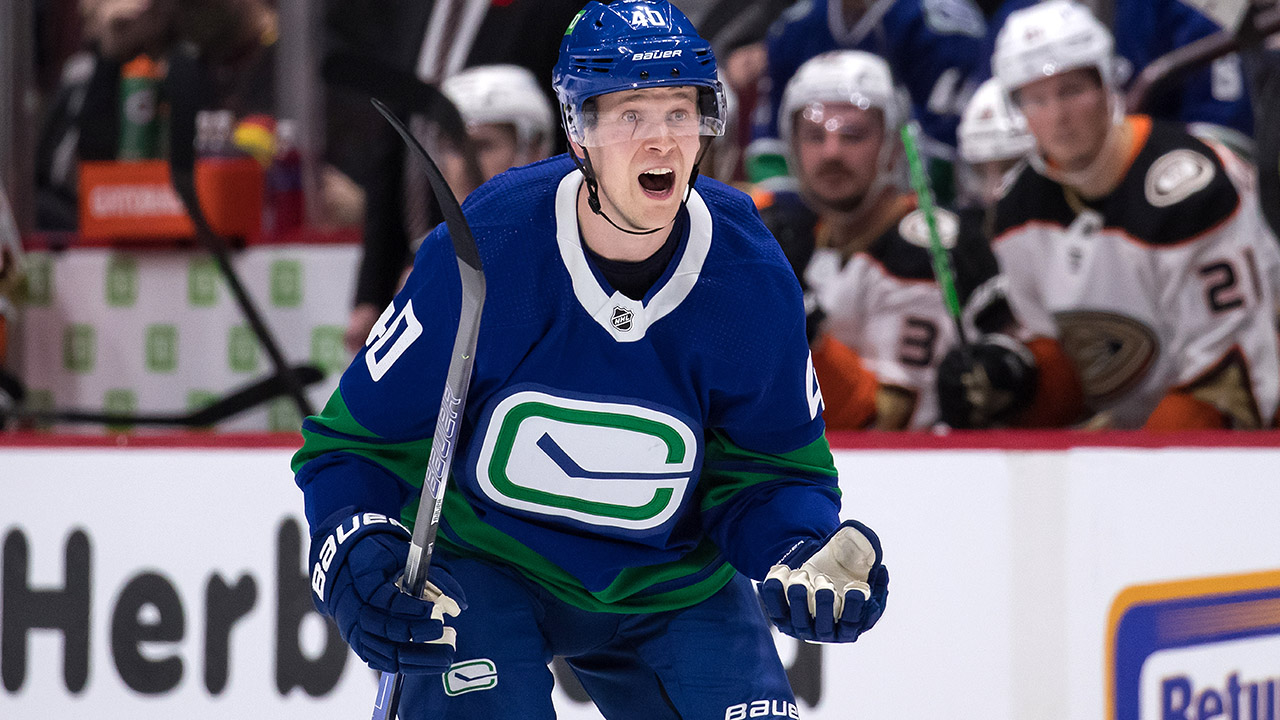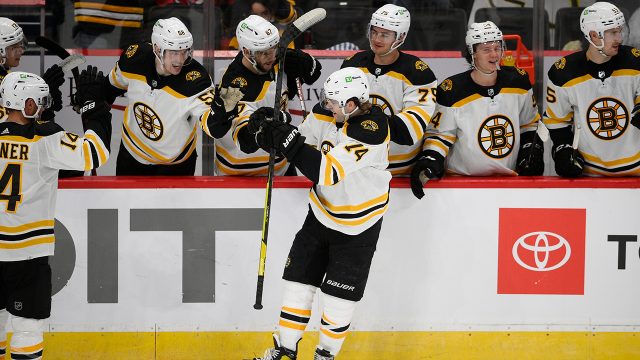
One year later, Elias Pettersson is back. If you didn’t know, you’d never guess where he had been.
The Vancouver Canucks centre has 11 goals and 21 points in 19 games, and although pointless in Thursday’s 4-3 win against the New York Islanders, was again one of his team’s best players. For six weeks, Pettersson has been playing about as well as he ever has in the National Hockey League.
Considering with whom Pettersson has been playing, deployed down the lineup by coach Bruce Boudreau, you could even argue this is the best the 23-year-old Swede has played.
It’s one thing to skate at even strength with J.T. Miller and Brock Boeser, quite another challenge when your wingers are Nils Hoglander and, the previous couple of games, Alex Chiasson.
Seeing Pettersson now makes it even harder to fathom how lost he looked through the first two months of the season when the former Calder Trophy winner was returning from a serious wrist injury and opened his new three-year, $22-million contract by scoring four times in 28 games.
“It definitely wasn’t the way I wanted it at the start of the season,” Pettersson said. “But you learn from it, get experience from it. I’m not living in the past; I’m looking to the future.
“I worked hard in the summer. I felt great coming in. But, I mean, that’s life: you can want something bad and it still doesn’t go the way you wanted or expected. It happens. I’m just focused on what’s ahead. It’s hockey.”
Pettersson spoke to Sportsnet on Wednesday, one year after he hyperextended his wrist in a March 1, 2021, game against the Winnipeg Jets. After playing the next night, Pettersson came out of the Canuck lineup and was expected to miss about a month. He sat out the rest of the pandemic-shortened season, and his rehab continued into the summer.
Then Pettersson missed most of training camp due to contract negotiations, but declared himself fully fit when he arrived in Vancouver. Pettersson wasn’t, even if he didn’t realize it.
He never indicated during the fall that his wrist was an issue, but acknowledged last week that it was still bandaged when the season began.
“It was a new experience for me to go through,” Pettersson said. “It’s not that I was focused on the wrist when I was playing, but … maybe it made me a little bit hesitant. But it’s definitely not an excuse. I wasn’t playing with confidence or the game I usually play. But I learned from it. Now that I’ve gone through it, hopefully it won’t happen again.”
Concealing an injury while playing has tactical benefits, maybe provides a psychological advantage. But a drawback is that it prevents fans and reporters from understanding a situation, eliminating any shield from criticism the player may have had.
“I’m not going to make excuses,” Pettersson said. “The wrist wasn’t 100 per cent; I was still feeling it. But it wasn’t an excuse. I was just not playing my best. I mean, it never came across my mind. I own up to my mistakes. Or not mistakes, but I own up to my play. I was never going to use it as an excuse. It’s not me. I’m not going to be like that.
“I have confidence in what I’m doing now. I’m making plays, I’m not feeling stressed. I’m just feeling like myself again, having fun out there. I’m just playing with confidence, which is the big difference.”
Another big difference is that instead of playing with Lotto linemates Miller and Boeser, Pettersson’s most frequent linemates since his hot streak began Jan. 16 with a two-goal game in Washington are Hoglander, the struggling sophomore, and rookie Vasily Podkolzin.

For the season, Pettersson’s 5-on-5 ice time with the 21- and 20-year-old has surpassed the centre’s time with Miller and is just minutes behind what Pettersson has logged with Boeser and Conor Garland.
Podkolzin and Hoglander, who skated Thursday with Pettersson and Garland, each scored against the Islanders. But each was also recently healthy-scratched by Boudreau, who has said he partnered them with Pettersson because the three are friends and enjoy playing together.
“When he plays with guys, he makes them better,” Boudreau said of Pettersson. “And we don’t have enough guys that make other guys better when they play with them. So, I mean, I can afford to use Petey in that situation. I’d love him … (to have Auston) Matthews and (Leon) Draisaitl on his line and see how they’d do, but he doesn’t. So, guys work hard with him; he’s been working hard. His best friend on the team is Hoggy, so we put them together because they communicate well together. But it’s a great attribute when you can put somebody on any line and he makes that line better.”
It’s what elite players are supposed to do.
“Yes, of course, there’s been a few different wingers,” Pettersson said. “I mean, every player brings a different aspect to the game. I’m glad I can play with a lot of people, but I’m just focussed on my game.
“Obviously, I’m super happy that we’re grinding our way back into the mix and fighting for a playoff spot because, like you said, we were out of it there (at the start of) December. I think all of us are playing with more confidence. Still, some games, we’re letting in seven goals, like we’re not ready from the start. We’re happy that we’re back in the mix but we’ve still got to be more consistent. We can’t have off-days on game days.”
The Canucks had won six of nine games before Thursday. But in their three losses, including Monday’s 7-2 crash in New Jersey, Vancouver trailed 5-0, 5-0 and 3-0.
This inconsistency, following general manager Patrik Allvin’s recent comments to Sportsnet about the Canucks’ practice habits and the need for players to take ownership over preparation, has further fueled public discussion about culture and leadership.
“I feel like whatever you do, it can always get better,” Pettersson said. “I can have a perfect game and still I’m looking to do things better. And then practices, we can have a good practice and still can do better. I mean, we are pushing each other to have good practices. I think it’s good that they’re not satisfied (because) that just means they want more. I see that as a positive.
“I want to play the best that I can every game. I’m definitely not a vocal leader; I’d rather just work as hard as I can and try to play the right way every game. Some games, obviously, I feel better. But I’m always trying to bring it and do my best.”







